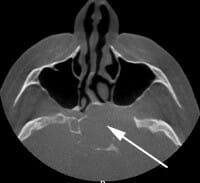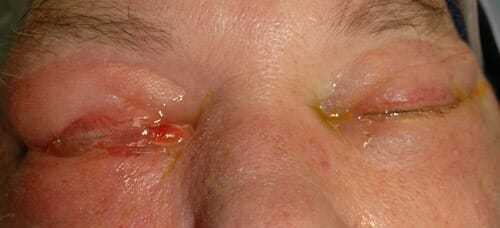Introduction
Most sinus infections are viral and will get better with time without treatment. Saline irrigations and decongestants may help improve your symptoms while the infection is resolving. An infection that lasts at least 10 days without improvement is likely to be a bacterial infection. A bacterial infection is also suspected if your symptoms get better and then worse again (“double worsening”). You may have nasal blockage, colored nasal discharge, or facial pain and pressure. Your doctor may prescribe an antibiotic for bacterial sinusitis. Nasal steroid sprays may help to control underlying longstanding inflammation. Decongestants and mucolytics (medications that break up mucus) may help provide symptom relief. Over-the-counter pain medications such as acetaminophen (i.e. Tylenol) or ibuprofen (i.e. Advil, Motrin) may help reduce facial pain and pressure associated with the infection.
Rarely do complications occur from acute or chronic sinusitis. The most common complications are explained below.
Decreased Sense of Smell
Decreased sense of smell (hyposmia) or complete loss of smell (anosmia) may occur with acute or chronic sinusitis. It may be temporary or permanent. Hyposmia or anosmia may be caused by obstruction of the olfactory cleft. The olfactory cleft is the site where smell is detected in the nose. Chronic inflammation of the olfactory nerve (the nerve of smell) can also cause damage to the nerve endings. Sense of smell may improve after sinus surgery for chronic sinusitis in some patients, but not others. There is no guarantee that surgery will improve one’s sense of smell.
Mucocele

A mucocele is a complication of sinusitis caused by obstruction of mucus drainage from the sinuses. A mucocele can be described as a sinus cyst. It can become infected (called a mucopyocele). If not treated a mucocele can cause pressure on the surrounding important structures. This can result in facial pressure, pain, headache and change in vision. In the case of mucopyocele, infection may extend into surrounding structures. CT scan or MRI can help make the diagnosis (See Figure 1). Symptoms may temporarily improve with a course of antibiotics and/or oral corticosteroids. However, sinus surgery is usually needed to open the cyst and blocked sinuses.
Infection of Surrounding Structures
Infections of structures surrounding the sinuses are uncommon complications of sinusitis. These structures include the blood vessels, eye, brain, bone, and overlying skin.
An infection that extends to the eye can cause vision changes or loss. Infection can involve the eyelid (preseptal cellulitis, See Figure 2) or eye tissue (orbital cellulitis). Infection can also form a collection of pus in the eye socket (subperiosteal or orbital abscess).
Infection can cause clotting of blood vessels adjacent to the sinuses (cavernous sinus thrombosis). It may also spread through the skull to involve the brain and spinal fluid. This can result in meningitis or a brain abscess. Infection of the bone itself is called osteomyelitis. Infection which spreads to the overlying skin causes cellulitis and/or an abscess.
These complications are extremely uncommon but require immediate attention. Treatment may include hospitalization, IV medications and/or surgery.

Copyright © 2020 by the American Rhinologic Society

